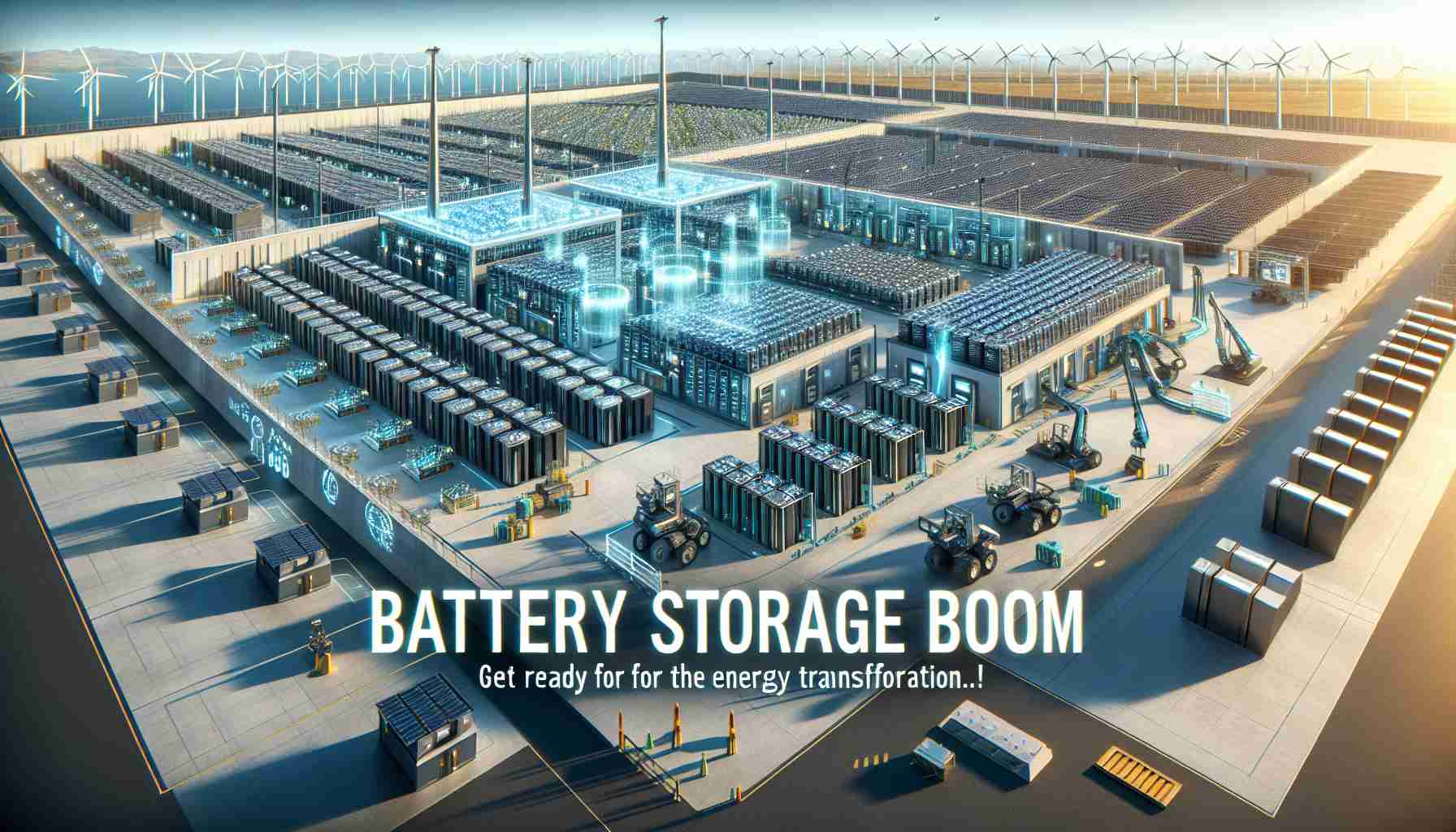
Unprecedented Growth in U.S. Battery Storage
As the U.S. pushes toward a greener future, the battery storage market has witnessed a staggering surge in 2024. By late November, a whopping 9.2 gigawatts (GW) of new battery capacity was installed, setting a new national record, according to data from S&P Global. This substantial increase indicates the sector’s rapid evolution and bright prospects.
A significant contributor to this growth is the integration of large-scale lithium-ion battery systems, which are crucial in managing energy demands. The third quarter saw extraordinary progress, with 3.6 GW added—signifying a remarkable 52.5% increase compared to the year before. The total capacity across the nation has now reached an impressive 26.3 GW.
These systems often work in conjunction with solar farms, providing dual advantages: they store excess solar energy for use during peak demand and ensure continuous power supply when sunlight is scarce. Notable among the completed projects is the Gemini Solar Plus Storage Project in Nevada, which combines substantial solar power generation with advanced battery technology.
Looking ahead, the future remains bright for battery storage, with developers launching projects totaling 14.2 GW in new capacity. As the demand for renewable energy intensifies, the U.S. aims for a staggering 143 GW of energy storage by 2030, paving the way for significant reductions in carbon emissions.
Battery Storage Market in the U.S.: Innovations and Future Trends
The battery storage market in the United States is experiencing a transformative phase, evident from the record-breaking installations and innovative projects taking shape in 2024. As the nation strives for a sustainable energy future, the integration and advancement of battery technologies are crucial in meeting the growing demands of renewable energy sources.
Key Innovations Driving Growth
The surge in installed battery capacity reflects not only an increase in demand but also significant innovations in battery technology. Companies are now focusing on enhancing energy density, improving charging times, and reducing costs, all while ensuring environmental sustainability. Enhanced lithium-ion technologies and the introduction of solid-state batteries are promising developments that could redefine market dynamics, making energy storage more efficient and accessible.
Use Cases of Battery Storage Systems
Battery storage systems are becoming integral to various energy architectures. Their uses include:
1. Peak Shaving: These systems allow businesses and utilities to manage peak demand more effectively, reducing the need for expensive peak power generation.
2. Renewable Integration: Storage systems store surplus energy generated by solar and wind, facilitating uninterrupted power supply during off-peak hours.
3. Grid Reliability: Advanced battery systems contribute to grid stability by providing ancillary services such as frequency regulation.
Market Analysis and Pricing Trends
The pricing landscape for battery storage solutions is continuously evolving due to increased competition and technological advancements. In 2024, the cost of large-scale battery installations has seen a notable decrease, making it more competitive against traditional energy sources. Analysts predict that if this trend continues, the average cost per kilowatt-hour (kWh) for battery storage could drop below $100 by 2025, encouraging broader adoption across various sectors.
Sustainability and Security Aspects
As the focus on sustainability intensifies, battery storage technologies are also being scrutinized for their environmental footprint. Companies are adopting circular economy practices, promoting battery recycling and reuse. Additionally, security concerns around the supply chain—particularly for materials like lithium—are prompting investments in sustainable mining practices and research into alternative materials.
Challenges and Limitations
Despite the impressive growth, the battery storage market faces challenges. The reliance on rare materials can create supply chain vulnerabilities, and issues related to battery disposal and recycling need to be addressed to minimize environmental impact. Moreover, regulatory frameworks and incentives vary significantly across states, complicating the landscape for new projects.
Future Predictions
Looking ahead, experts anticipate further exponential growth in the battery storage market. With a target of achieving 143 GW of energy storage capacity by 2030, the U.S. is positioning itself as a leader in renewable energy solutions. This ambitious goal is expected to foster innovation, attract investments, and ultimately reduce carbon emissions significantly.
Conclusion
The expansion of battery storage in the U.S. represents more than just a significant increase in capacity—it signals a pivotal shift towards a sustainable energy future. As technologies advance and market dynamics evolve, the integration of battery storage will play a crucial role in shaping energy strategies, ensuring reliability, and fostering environmental sustainability.
For more insights on the evolving energy landscape, visit energy.gov.



